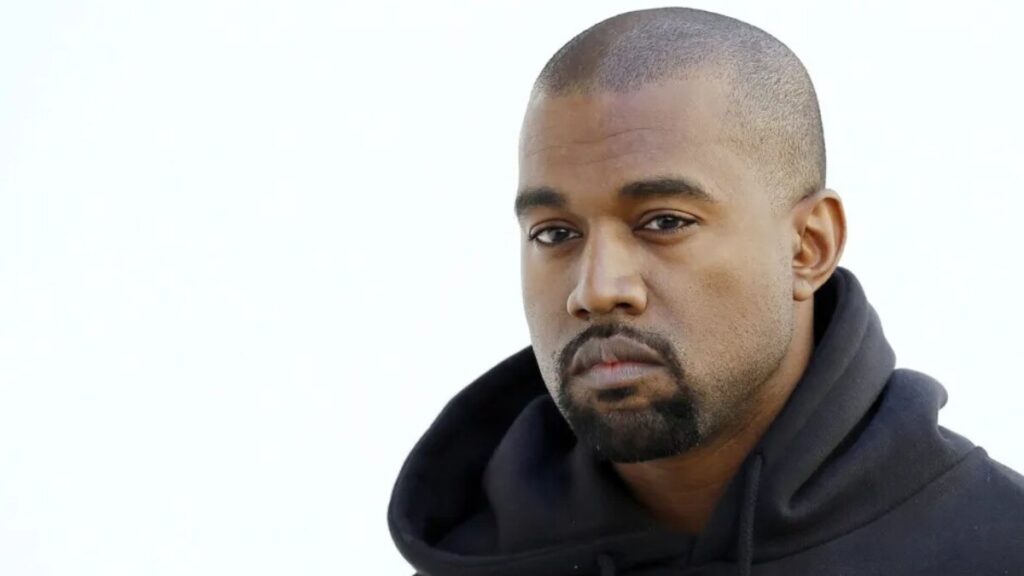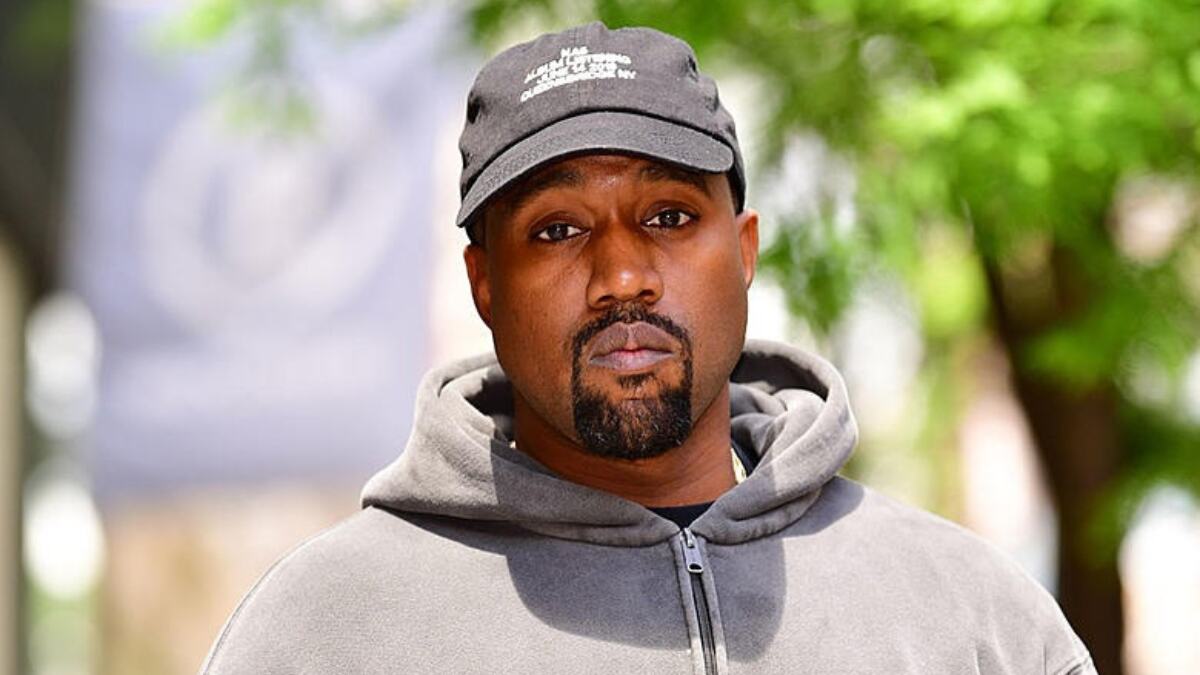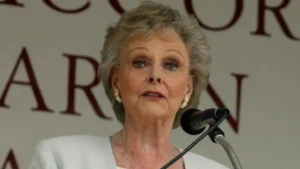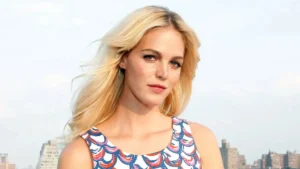Few celebrity stories blur the lines between genius and implosion like Kanye West’s. Once hailed as a visionary who redefined music, fashion, and fame, West soared into the financial stratosphere with a net worth that reportedly surpassed $400 million. At the heart of this meteoric rise stood Yeezy—a brand born from cultural cachet and strategic partnerships, most notably with Adidas. But the same empire that made headlines for redefining streetwear would eventually unravel under the weight of controversy, erratic moves, and high-profile fallouts.
This isn’t just a tale of lost endorsements or public backlash—it’s a masterclass in how modern celebrity business empires are built on fragile foundations. From Gap to Balenciaga, major brands once clamored to align with West’s name; then they dropped him overnight. His real estate ambitions, sprawling across Calabasas and Wyoming, reflected an obsession with legacy—but also underscored his lack of operational grounding.
As we examine the rise and Yeezy collapse, we reveal a deeper truth: in today’s culture-driven economy, fortune is fast, but fallout is faster. What happened to Kanye West’s net worth is more than a personal reckoning—it’s a warning for every brand that believes brilliance alone is bulletproof.
From Beats to Billions: The Yeezy Empire’s Meteoric Ascent
The Adidas Coup — How Kanye Leveraged Cultural Capital into Cash
When Kanye West partnered with Adidas in 2013, it wasn’t just a celebrity endorsement—it was a cultural shift. Fresh off a rocky split with Nike, Kanye brought more than just designs to the table—he brought narrative, defiance, and undeniable cultural capital. The Yeezy line, launched in 2015, didn’t just fill shelves—it created riots, waitlists, and instant sell-outs. Within months, it became one of the most Googled sneakers in the world, triggering a resale frenzy that reshaped the sneaker resale economy.
Unlike typical celebrity brand deals, Kanye embedded himself in every layer—from silhouette design to rollout strategy. Each limited-edition drop was a masterclass in scarcity marketing, stoking hype with cryptic tweets and minimalist campaigns. Yeezys became more than footwear—they were wearable symbols of status and cultural fluency.
The Adidas-Yeezy collaboration catapulted the brand to new heights, reviving its edge in a market dominated by Nike. For Adidas, Kanye wasn’t just a designer—he was a disruptive force. For Kanye, the deal proved that creative autonomy paired with brand infrastructure could yield a fashion empire. It worked—until it didn’t.
Valuations and Vanity — The $1.5 Billion Yeezy Mirage
At its peak, the Yeezy valuation soared to $1.5 billion—a figure that vaulted Kanye West onto the Forbes billionaires list and became a cornerstone of his self-proclaimed genius. But behind the headlines and headline-making tweets was a more complicated financial reality. West didn’t fully own Yeezy; instead, he held an equity stake in a brand heavily tied to Adidas, meaning much of his fortune was contingent on contracts, not cash in the bank.
This was a classic case of paper wealth—an impressive figure on valuation sheets, but far from liquid. The media, especially Forbes, played a major role in shaping the narrative. Their 2020 profile of Kanye as a billionaire became gospel in the court of public opinion, even as industry insiders quietly questioned the math.
In retrospect, the $1.5 billion number reflected more about what people wanted to believe than what was verifiably his. It’s a lesson in how celebrity net worth reporting often blurs aspiration with accuracy—and how quickly those illusions unravel when the infrastructure underneath them collapses.
When Partnerships Crumble: The Backlash That Cost Him Everything
The Adidas Fallout: Contracts, Clauses, and Consequences
The Adidas-Yeezy split wasn’t just a PR disaster—it was a high-stakes business divorce that unraveled one of the most lucrative partnerships in sneaker history. The termination came swiftly in late 2022, following Kanye’s series of inflammatory public remarks. But behind the headlines were contract disputes that exposed how little control West had over Yeezy’s future.
Adidas owned the designs, the production infrastructure, and the distribution networks. Kanye retained intellectual property ownership of the Yeezy name, but not the sneakers themselves—meaning the brand could continue selling stripped-down versions of Yeezys without his involvement. For a deal so defined by exclusivity and identity, this legal nuance triggered a quiet but profound brand collapse.
Many questioned whether Kanye had overestimated his negotiating power. While his cultural influence built the hype, Adidas held the keys to scalability. The partnership’s end wiped out hundreds of millions in projected earnings and spotlighted how fragile even the most iconic brand deals can be. For investors or executives asking what happened between Kanye West and Adidas, the answer lies in a painful imbalance of power—and a cautionary tale in overreaching autonomy.
A Domino Effect: Balenciaga, Gap, and Corporate Retreat
After Adidas severed ties with Kanye West, the fallout was swift and sweeping. Balenciaga—once a close creative partner—was the first major fashion house to publicly distance itself, removing him from campaigns and wiping their collaborative designs from shelves. Gap, which had inked a 10-year deal with Kanye for the Yeezy Gap line, soon followed. The collection was abruptly discontinued, store inventory was pulled, and all future releases were scrapped.
This wasn’t a series of isolated decisions—it was a domino effect driven by a climate of heightened brand safety sensitivity. In a hyper-connected world, reputational risk travels fast. Kanye’s increasingly erratic behavior and offensive statements forced corporations to reassess the cost of association—not just in dollars, but in public trust. The fashion industry backlash wasn’t just about offense; it was about optics, accountability, and alignment with consumer values.
This wave of exits exemplifies the brutal logic of cancellation economics: when controversy outweighs clout, even billion-dollar collaborators retreat. In the end, Kanye’s empire wasn’t undone by one scandal, but by a cultural consensus that the risk of staying outweighed the rewards of brilliance.
Beyond Yeezy: Inside Kanye’s Real Estate Dreams (and Misfires)
From Calabasas to Wyoming: His Vision of ‘Yecosystems’
While Kanye West’s fashion empire dominated headlines, his ambitions stretched far beyond apparel. In the hills of Calabasas and the vast plains of Wyoming, he quietly began constructing what he called “Yecosystems”—a visionary blend of architecture, spirituality, and self-sustaining community. These weren’t just homes—they were statements. From sleek minimalist architecture to futuristic Yeezy domes inspired by Star Wars, Kanye envisioned a world where design met divine purpose.
In Wyoming, he purchased over 4,000 acres of sprawling land—transforming a Kanye West ranch into an experimental space for creativity, healing, and isolation from the industry machine. The domes in Calabasas, meant to house low-income families and creatives alike, were part of his mission to “redefine the future of housing.” Yet they also reflected a deep desire for control—not just over space, but over narrative.
These celebrity real estate ventures were less about luxury and more about legacy. Kanye wasn’t building homes; he was building mythos. But while the vision was bold, execution proved far more elusive. The land remained—what he hoped to plant there, less so.
The Cost of Vision Without Structure
Kanye West’s real estate ventures were bold in concept but fractured in execution. His Yeezy domes in Calabasas, built without permits, were quickly met with zoning violations and eventually demolished. In Wyoming, vast tracts of land sat undeveloped or partially constructed—dreams of utopian “Yecosystems” suspended in a haze of unfinished blueprints and unfulfilled permits. What Kanye lacked wasn’t vision—it was structure.
These projects fell victim to the same pattern seen in many unfinished celebrity projects: grand ambition launched without a clear operational framework. Kanye’s desire to disrupt housing norms clashed with municipal regulations and a lack of logistical planning. There was no clear roadmap, no construction timeline, and no scalable model for sustainability. Investors were wary; local officials were skeptical.
As a result, properties once considered forward-looking assets now face luxury property devaluation. The Calabasas land reportedly lost value post-demolition, while parts of Kanye West’s ranch in Wyoming were listed for sale—at a loss. His experience offers a cautionary tale: without infrastructure, even the boldest visions risk collapsing under their weight.
I Watched It Unravel: An Insider’s View on the Fall
I remember the moment it all started to feel unstable. It was late 2021, and I was covering a Yeezy product summit in Los Angeles. What should’ve been a tightly run preview for investors and press turned into a three-hour wait in a dim warehouse, with no clear agenda, no PR guidance, and Kanye appearing unannounced in a black hoodie, riffing on ideas that hadn’t yet been prototyped. At the time, it felt like creative spontaneity. In hindsight, it was a flashing red light of internal chaos.
Over the following months, more warning signs of collapse surfaced: long-time Yeezy team members quietly exiting, a stream of half-launched products, and increasingly erratic communication from Kanye himself. There was no operational lead, no strategy team, no sense of who was steering the ship. What struck me most was how the empire had grown too big to be managed by instinct alone.
From the outside, people saw the headlines—the Adidas breakup, the controversial interviews—but brand mismanagement had already hollowed out the infrastructure from within. As someone who watched it unfold from behind the curtain, I think the real collapse happened long before the public noticed. We were enamored with the myth of the genius, and here’s what we missed: without accountability and a functioning team, even the most innovative brand can quietly, and completely, unravel.
How Kanye Compares to His Billionaire Peers
The Hip-Hop Mogul Index
At his financial peak, Kanye West’s net worth was estimated at over $400 million, according to Forbes, making him one of the richest figures in hip-hop history. But that crown was short-lived. Following the collapse of Yeezy’s Adidas deal and the mass withdrawal of brand partnerships, estimates dropped by over $1 billion nearly overnight. In contrast, hip-hop billionaires like Jay-Z, Diddy, and Dr. Dre have maintained far more stable fortunes.
Why? The difference lies in celebrity portfolio strategy. Jay-Z built a diversified empire spanning liquor (Armand de Brignac), streaming (Tidal), and sports management (Roc Nation). Diddy followed a similar model with Ciroc, Revolt, and fashion. Dr. Dre capitalized on Beats’ sale to Apple. These moguls emphasized long-term brand building and equity-based deals that weren’t tethered to a single volatile entity.
Kanye, by contrast, placed much of his fortune into one high-risk, high-reward venture—Yeezy. When that collapsed, so did the illusion of untouchable wealth. The lesson is clear: cultural influence creates opportunity, but diversified structure preserves it.
Celebrity Billionaires Who Survived and Thrived
While Kanye’s fortune crumbled under the weight of controversy, other celebrity billionaires have not only survived—but thrived—through shifting markets and public scrutiny. Rihanna, with an estimated net worth of $400 million, built Fenty Beauty into a global powerhouse by emphasizing inclusivity and smart partnerships with LVMH. Kim Kardashian, worth $1.7 billion, grew SKIMS and SKKN through disciplined branding and strategic licensing. Meanwhile, Tyler Perry, valued at $1.4 billion, owns nearly every piece of his entertainment empire—from content libraries to production studios.
What unites them isn’t just fame—it’s celebrity business resilience. These figures relied on diversified income streams and avoided overexposure to any single venture. They prioritized control, operational efficiency, and public trust.
For future celebrity entrepreneurs, the message is clear: sustainable wealth requires more than bold ideas. It demands infrastructure, ownership, and a brand identity that can weather cultural storms. In an era where luxury brand ownership meets cancel culture, resilience is the ultimate flex.
Rebuilding from the Rubble: What Kanye’s Next Act Could Look Like
Independent Distribution, Music Control, and the Donda Engine
With his major brand partnerships in ruins, Kanye West may be entering a new phase—leaner, riskier, but also more autonomous. His most enduring asset isn’t a shoe line or a ranch—it’s his music rights ownership and the cultural capital attached to the Donda name. As traditional industry doors close, Kanye could double down on artist independence, using his loyal fanbase and direct-to-consumer strategies to rebuild on his terms.

The future of his empire may lie in tech-powered distribution: blockchain-enabled releases, exclusive content platforms, or private fashion drops. His recent Donda livestreams and unreleased albums suggest he’s already experimenting with models outside the industry playbook. The Donda branding—once tied to a creative agency, album series, and academy—could become the core of a stripped-back creative engine, producing niche fashion, multimedia, or even virtual experiences.
While unpredictable, Kanye’s next act could reflect the future of celebrity business: decentralized, agile, and fiercely controlled. If he learns from past missteps, this could be a pivot from collapse to reinvention—on his terms, and without middlemen.
Reputation, Redemption, and the Cost of Creative Freedom
What does redemption look like for someone like Kanye West—an artist whose brilliance has often been eclipsed by his volatility? In the era of cancel culture, the path back isn’t just about public apologies or new projects; it’s about re-earning trust in a world with a short memory but long receipts.
Kanye’s challenge isn’t talent—it’s credibility. The very creative freedom that fueled his empire has also alienated fans, brands, and collaborators. But history suggests redemption isn’t impossible. Robert Downey Jr. reclaimed Hollywood after years of scandal. Dave Chappelle navigated backlash to regain control over his narrative. Even Tiger Woods found his way back into public favor, one win and one vulnerable moment at a time.
The key to reputation rehabilitation lies in consistency and transparency. Kanye’s future depends on whether he can operate with clarity and care, not just chaos. The long game in branding means showing—not just telling—growth over time. And in a culture that rewards comeback stories, his redemption arc remains possible. But it won’t be quick, and it won’t be on his terms alone.
Legacy in Flux — Genius, Wealth, and the Price of Provocation
Kanye West’s legacy is a study in extremes—a man whose creative brilliance reshaped music, fashion, and branding, yet whose unchecked impulses ultimately dismantled much of what he built. His rise was meteoric, his reach undeniable. But the same qualities that fueled his ascent—defiance, disruption, and unfiltered authenticity—also revealed the fragility of celebrity-driven empires built without structure.
In the end, Kanye’s story is less about money lost and more about wealth volatility in an era where influence moves faster than infrastructure. He proved that fame can launch a billion-dollar brand—but without discipline, stability, and trust, that brand can vanish just as fast. His fall wasn’t just financial; it was foundational.
So what do we take from this? Those celebrity entrepreneurship lessons must evolve. That vision must be matched witha strategy. That creative freedom, while essential, comes with cost—and sometimes collapse.
The question that remains is this: In a culture obsessed with icons, can we build celebrity empires that endure beyond the flash of brilliance? Or will Kanye’s collapse be the blueprint of what not to do in the age of personal branding?
Nishant Wagh is the founder of The Graval and a seasoned SEO and content strategist with over 15 years of experience. He writes with a focus on digital influence, authority, and long-term search visibility.





5 thoughts on “Kanye West’s Billion-Dollar Breakdown: Yeezy, Real Estate, and the Collapse That Reshaped His Fortune”